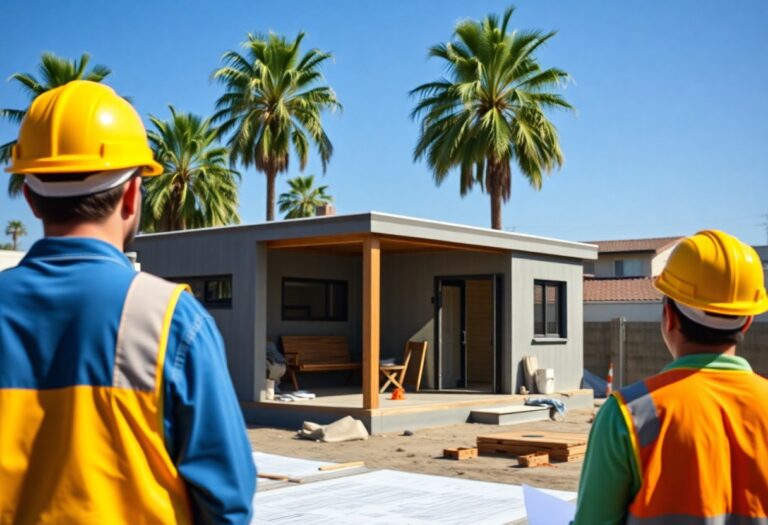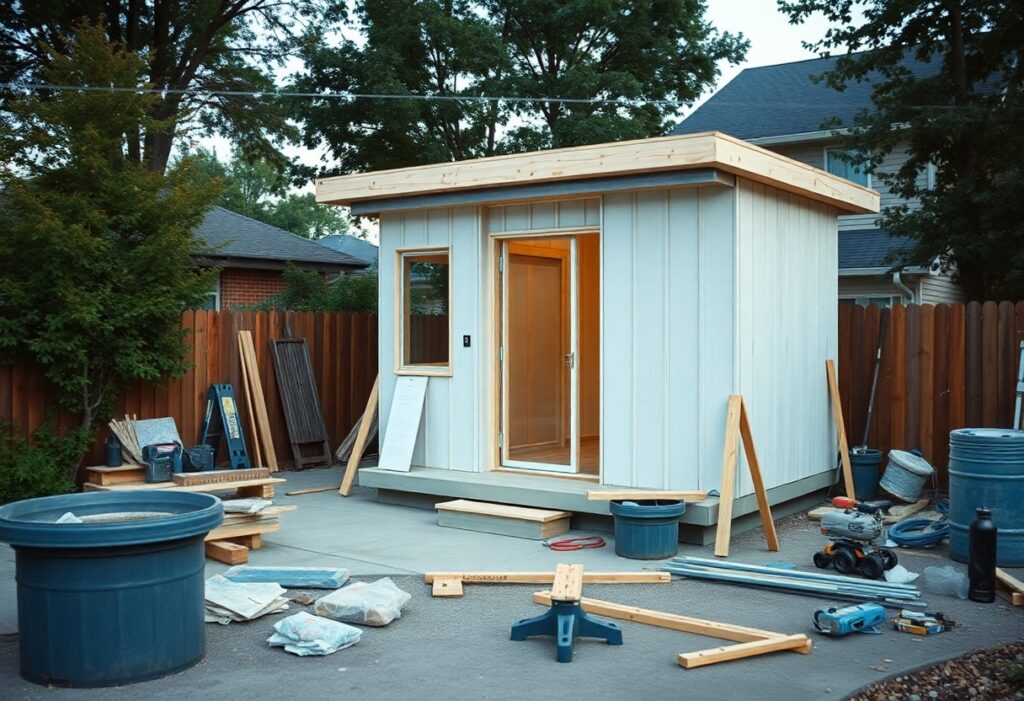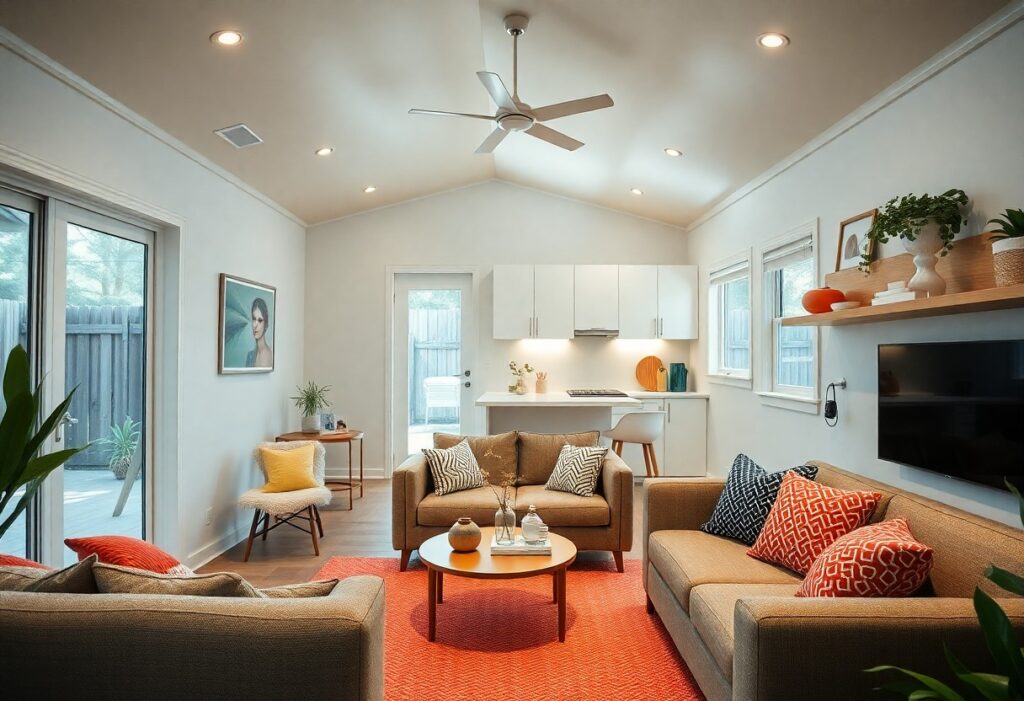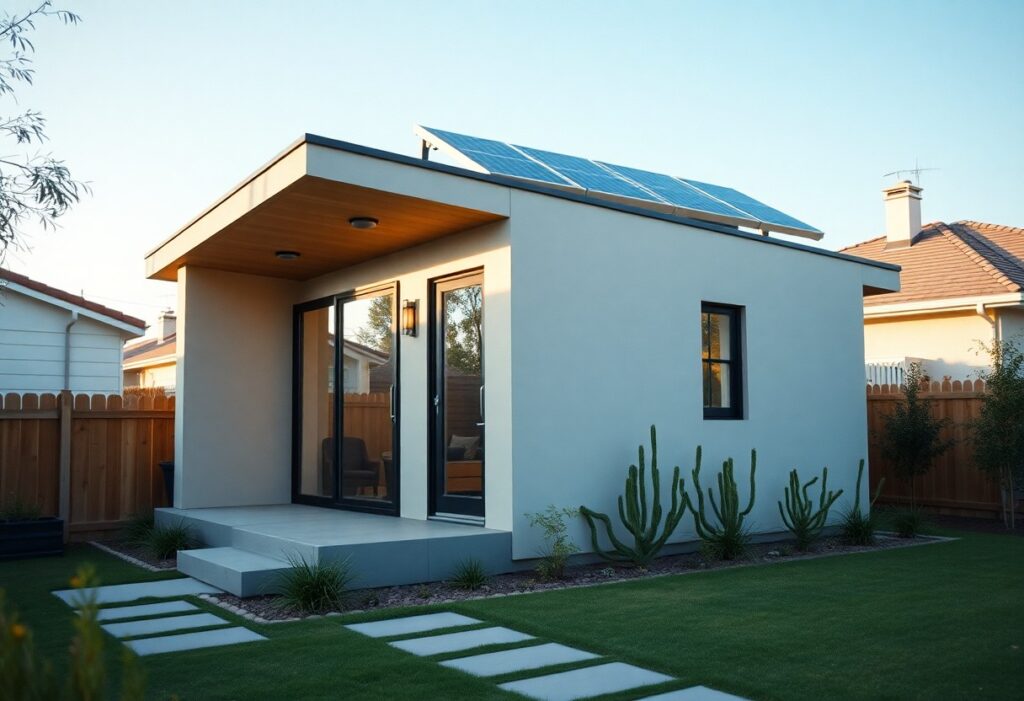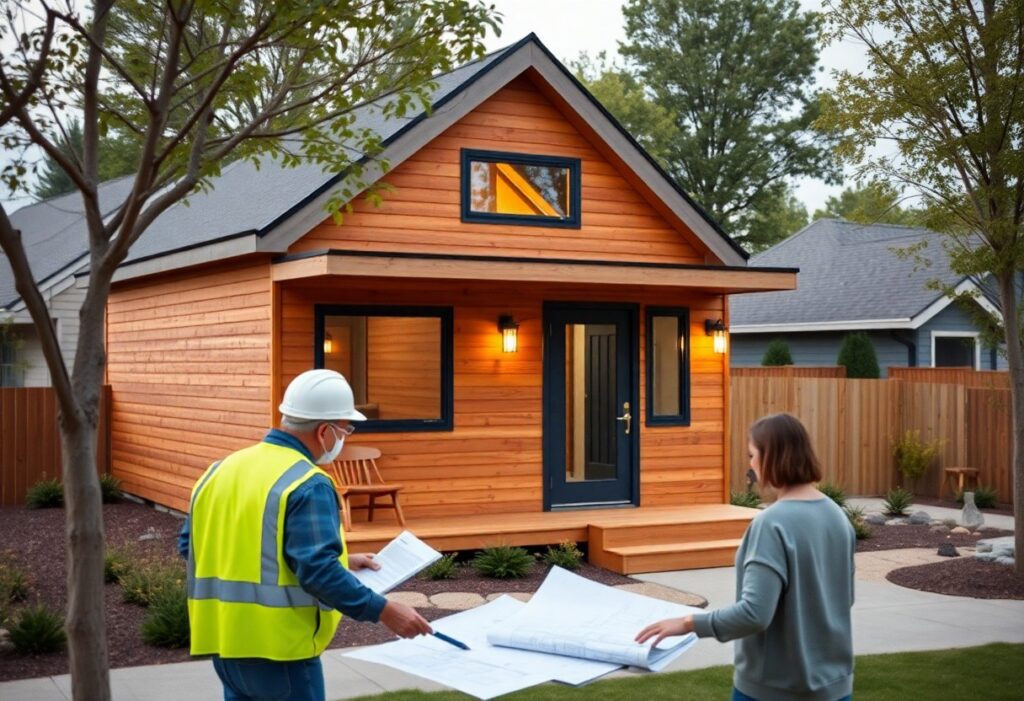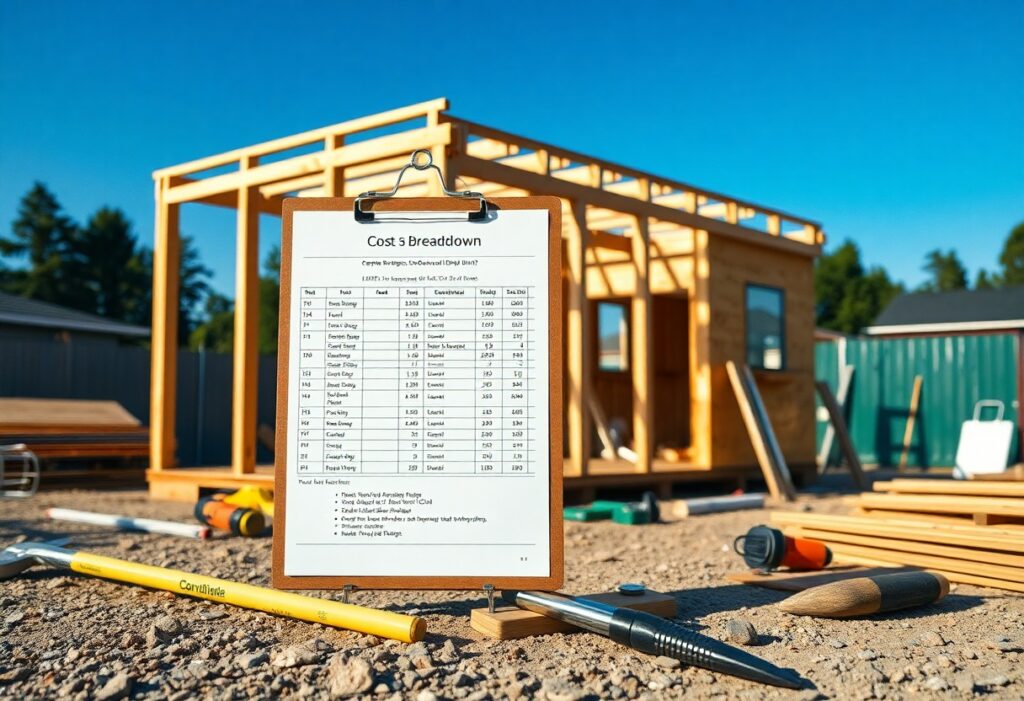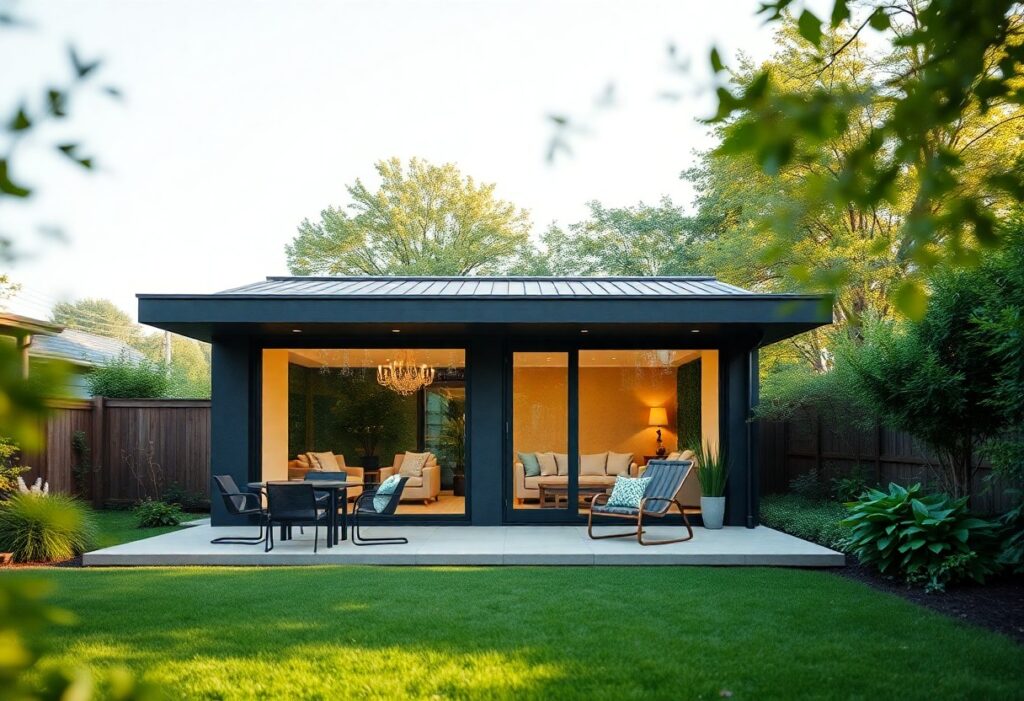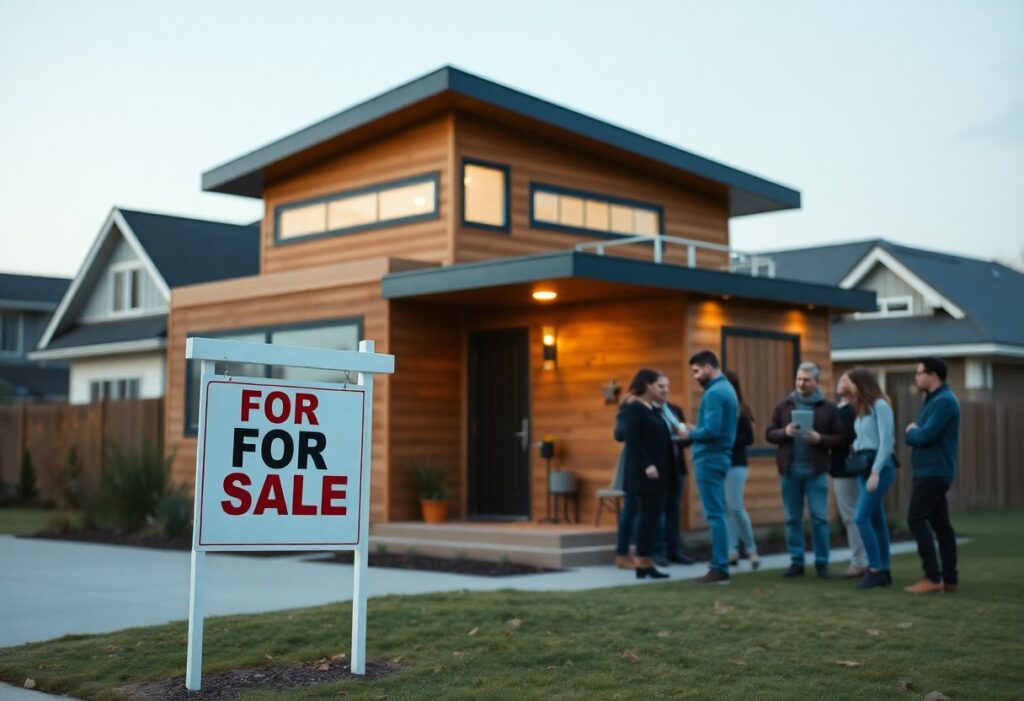Most homeowners seeking to expand their living space or generate rental income find themselves considering Accessory Dwelling Units (ADUs). Understanding the regulatory landscape and construction process in Orange County is vital to ensuring a successful project. This guide will walk you through the imperative steps, from permitting and design to budget management, helping you avoid common pitfalls and maximize your investment. With the right knowledge, you can transform your property and enjoy the numerous benefits ADUs offer.
Key Takeaways:
- Understanding Zoning Regulations: Familiarize yourself with local zoning laws in Orange County to ensure your ADU construction complies with residential area requirements.
- Permits and Approvals: Obtain necessary permits from the city or county before beginning construction to avoid legal issues and delays.
- Design Considerations: Plan your ADU layout based on functionality, aesthetics, and compliance with building codes to enhance both livability and curb appeal.
- Financing Options: Explore various financing solutions, such as home equity loans or construction loans, to fund your ADU project effectively.
- Hiring Professionals: Consider hiring experienced architects, contractors, and designers familiar with Orange County’s regulations to streamline the construction process.
- Neighborhood Compatibility: Design your ADU to blend seamlessly with the existing neighborhood while addressing any potential concerns from neighboring properties.
- Post-Construction Regulations: Stay informed about occupancy permits and other regulations after construction to ensure your ADU remains compliant for rental or personal use.
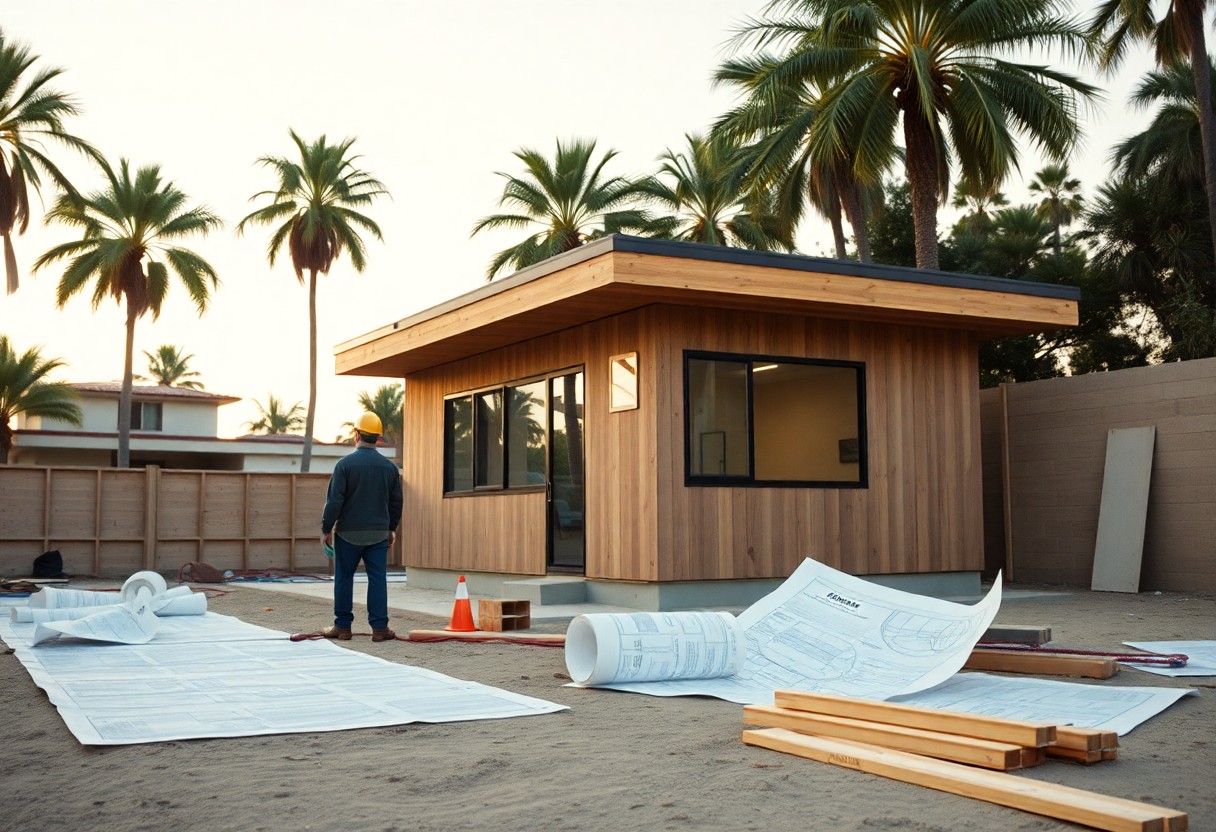
Understanding ADUs
Advancing the conversation around housing solutions in Orange County, it’s necessary to grasp what an Accessory Dwelling Unit (ADU) is. ADUs are versatile structures that can serve various purposes, such as guest houses, rental units, or personal offices, while providing homeowners with added *functional space* on their property.
Definition and Types of ADUs
| Definition | An ADU is a secondary housing unit that shares a lot with a primary residence. |
| Detached ADU | A standalone structure separated from the main home. |
| Attached ADU | An extension of the primary residence, like a basement or garage conversion. |
| Junior ADU | A smaller, converted space within the primary home. |
| Use Cases | (e.g., rental, guest accommodation, etc.) |
Knowing the types and definitions of ADUs is the first step in making informed decisions about your property and investment strategy.
Benefits of Building an ADU
ADUs provide *numerous benefits* to homeowners seeking innovative housing solutions. They can generate *additional income* through rentals, increase property value, and offer *flexibility* for multi-generational living situations. With an ADU, you can optimize your *space* without the need to move or buy a larger home.
This unique dwelling option not only gives you the opportunity to earn rental income but also enhances your property’s value. By creating an *additional living space*, you can accommodate family, friends, or future tenants, ultimately fostering a *sense of community* in your household. Furthermore, the *financial benefits*, including potential *lower housing costs* in the long run, make ADUs an attractive investment for any homeowner looking to maximize their property’s potential.
1. Understand local zoning regulations for ADUs in Orange County.
2. Obtain necessary permits before starting construction projects.
3. Choose the right contractor for your ADU build.
4. Ensure compliance with building codes and inspections.
5. Consider financing options specifically for ADU projects.
6. Engage with the community to address concerns proactively.
Regulatory Framework in Orange County
Clearly, understanding the regulatory framework for accessory dwelling unit (ADU) construction in Orange County is imperative for a smooth building experience. Local regulations and state laws govern the ADU process, and adhering to these guidelines can prevent costly setbacks. For insights from others navigating this journey, check out Anyone have experience building an ADU : r/orangecounty.
Zoning Laws and Requirements
Regulatory standards regarding zoning laws and requirements in Orange County dictate where you can build your ADU on your property. It is vital to review your local zoning ordinances to confirm compliance with setbacks, height restrictions, and property use classifications to ensure your project aligns with regional regulations.
Permitting Process
With a thorough understanding of your project location and zoning laws, the next step involves the permitting process. This series of steps may seem overwhelming, but paying close attention to detail is paramount.
Considering the permitting process can take time and involves multiple documents, it is advisable to familiarize yourself with the necessary applications and schedules. Submitting the wrong paperwork may lead to delays or, even worse, rejection of your project. Carefully check requirements for building permits, occupancy permits, and approvals for health and safety codes. Also, plan for potential inspection points throughout construction to ensure your ADU meets all standards and regulations.
Design Considerations
Now that you’ve decided to build an Accessory Dwelling Unit (ADU) in Orange County, it’s vital to shift your focus to design considerations. This involves assessing your space requirements, ensuring functionality, and aligning the aesthetics of your ADU with the character of your existing home and neighborhood. Thoughtful design will not only enhance the livability of your ADU but also contribute positively to the overall value of your property.
Space Planning and Functionality
On initiateing on your ADU construction, effective space planning is vital to maximize functionality. Consider how each area serves its purpose, ensuring efficient use of available square footage. Whether it’s a studio or a separate one-bedroom unit, prioritize open layouts, multi-functional furniture, and storage solutions that promote a sense of spaciousness.
Aesthetic and Neighborhood Compatibility
To maintain harmony in your community, your ADU’s design should reflect the architectural style and aesthetics of your neighborhood. This not only enhances your property’s appeal but also fosters positive relationships with your neighbors. Selecting materials and designs similar to neighboring homes can significantly impact the visual appeal and property value.
At the heart of aesthetic and neighborhood compatibility lies the need to respect your surroundings. Ensure that your ADU’s scale, materials, and colors align with the overall look of your community. Avoid overly modern designs that might clash with traditional homes, as this could lead to tension with neighbors. By opting for designs that mesh well with local architectural trends, you contribute to the cohesiveness of your neighborhood while enhancing your property’s market value.
Budgeting for ADU Construction
Unlike traditional home renovation projects, budgeting for ADU construction involves unique costs and considerations. You need to take into account not only the construction expenses but also permit fees, utility connections, and potential landscaping. By creating a detailed budget, you can ensure your project stays on track and within your financial limits.
Cost Estimation
Budgeting effectively for your ADU starts with a clear understanding of potential costs. You should obtain estimates from contractors, consider material choices, and factor in design fees. Additionally, price fluctuations can occur, so having a contingency fund can help you manage unexpected expenses.
Financing Options
One of the key aspects of financing your ADU construction is exploring various options available to you. From personal loans to home equity lines of credit, there are different methods to fund this investment.
Financing your ADU can include various methods such as home equity loans, renovation mortgages, or even government grants specifically designed for ADUs. It’s important to evaluate your current financial situation and consider how each option will affect your budget and long-term financial goals. Working with a financial advisor can provide insights and help you find the most suitable financing solution for your project without stretching your finances thin.
Hiring Professionals
For a successful ADU construction project in Orange County, hiring the right professionals is important. Experienced architects, designers, and contractors will ensure your vision is brought to life while adhering to local regulations and guidelines. Their expertise will streamline the process and mitigate potential pitfalls, allowing you to focus on the exciting aspects of your new space.
Architects and Designers
Architects play a vital role in creating a functional and aesthetically pleasing space for your ADU. They will work closely with you to develop design plans that reflect your vision while ensuring compliance with zoning laws and building codes.
Contractors and Project Managers
With the right contractor and project manager, your ADU construction will progress smoothly and remain on schedule. They will coordinate all aspects of the build, from obtaining permits to managing subcontractors, ensuring every detail is executed efficiently.
Due to the complexity of ADU projects, choosing experienced contractors and project managers is important for your peace of mind. A reputable contractor will communicate effectively, explaining the process and any potential challenges along the way. Their expertise will help you avoid costly delays and ensure high-quality workmanship. Additionally, a skilled project manager can provide oversight to guarantee the project aligns with your budget and timeline, creating a positive experience from start to finish.
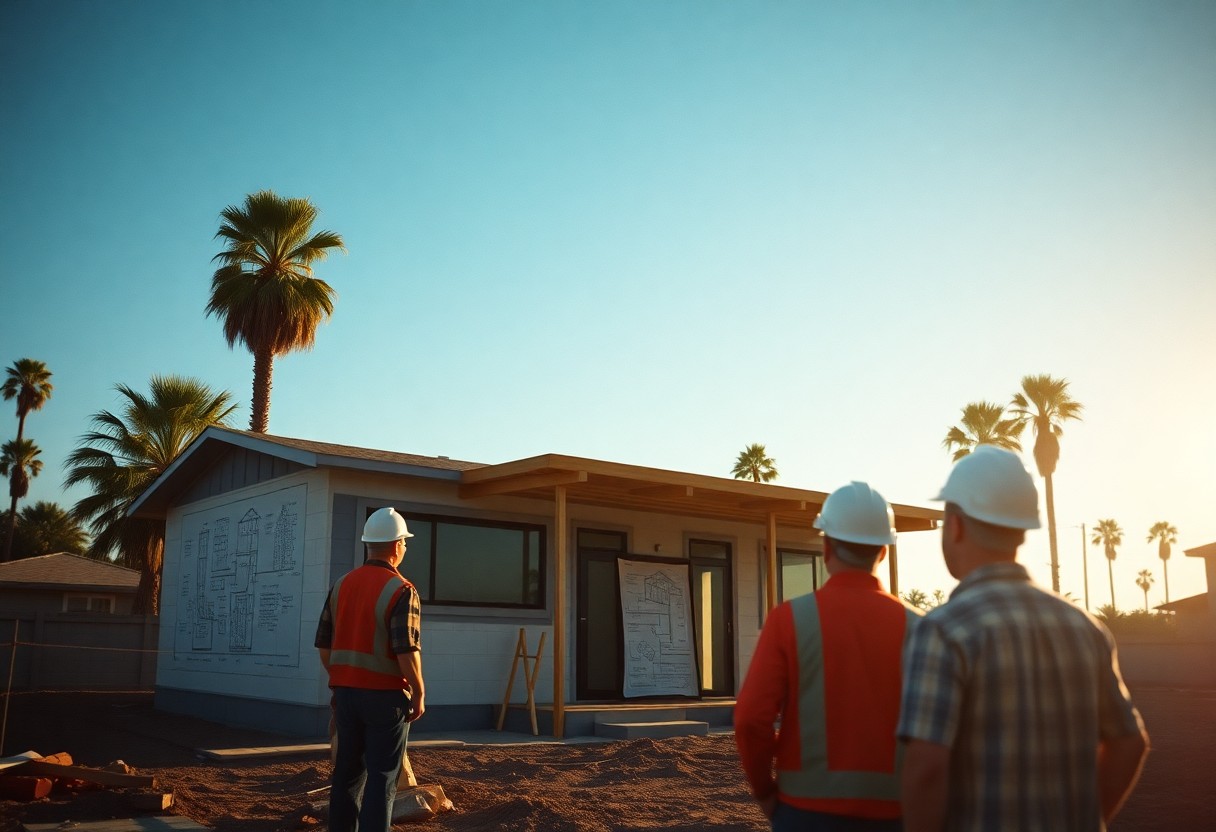
Construction Timeline
Not understanding the construction timeline can lead to frustration and delays in your ADU project. It’s imperative to have a clear overview of each phase to ensure the process runs smoothly, from permits to the final walkthrough. Staying informed about what to expect at each stage will help you keep your expectations aligned and your project on track.
Pre-construction Preparation
To successfully navigate the pre-construction preparation, you must gather all necessary documents, including permits and design plans. This stage involves thorough planning and coordination with your contractor to address any potential issues before construction begins. Establishing a timeline and budget will also set a solid foundation for your project.
Construction Phases and Completion
By understanding the construction phases, you can effectively track your project’s progress. Typically, this includes site preparation, foundation work, framing, plumbing, electrical installation, and finishing touches. Each stage should be closely monitored to ensure compliance with local regulations and your architectural vision.
Indeed, successful completion of your ADU comes from a meticulous approach to each construction phase. During framing, you must ensure the structure aligns with your designs for optimal functionality and aesthetics. Watch for potential issues such as weather-related delays or material shortages, which can impede progress. Once your ADU reaches the finishing stages, you can revel in the tangible progress while affirming that you’ve adhered to local building codes. Your active involvement will significantly enhance the overall outcome of your construction journey.
Final Words
Following this comprehensive guide, you can confidently navigate the ADU construction process in Orange County, ensuring you meet all regulations and maximize the potential of your property. From understanding zoning laws to finding reliable contractors, your journey can be seamless. For additional insights and resources, visit ADU In Orange County. With the right knowledge and planning, you are well on your way to enhancing your living space and property value.
FAQ
Q: What is an ADU and why is it important in Orange County?
A: An Accessory Dwelling Unit (ADU) is a secondary dwelling unit on a single-family residential lot. In Orange County, ADUs have gained importance due to the growing need for affordable housing options. They provide homeowners with the opportunity to generate rental income or accommodate extended family members, thereby addressing housing shortages in the region.
Q: What are the key regulations governing ADU construction in Orange County?
A: Orange County has specific regulations for ADU construction, including limits on size, height, and setback requirements. Typically, the maximum size of a detached ADU is 1,200 square feet, but this can vary based on zoning. Homeowners must also comply with local building codes and safety standards, and it is advisable to consult the County’s planning department for the most up-to-date regulations.
Q: How do I start the process of building an ADU in Orange County?
A: To begin the process of building an ADU, homeowners should first assess their property’s zoning designation to ensure ADUs are permitted. Next, it is recommended to develop a preliminary design and feasibility analysis, followed by consulting with an architect or design professional. Once plans are made, homeowners can submit an application to the local planning office for permits and approvals.
Q: What permits are needed for constructing an ADU in Orange County?
A: Various permits are required for constructing an ADU in Orange County, including a building permit, electrical permit, plumbing permit, and possibly a grading permit. The exact permits needed depend on the construction type and scope of work. It is imperative to check with the local permit office for specific requirements tailored to your project.
Q: How long does the ADU construction process typically take in Orange County?
A: The timeline for constructing an ADU in Orange County can vary significantly based on factors such as complexity of the design, permitting process, and contractor availability. Generally, homeowners can expect the entire process—from design to construction—to take anywhere from 6 months to over a year. Effective communication with local authorities and contractors can help streamline this process.

